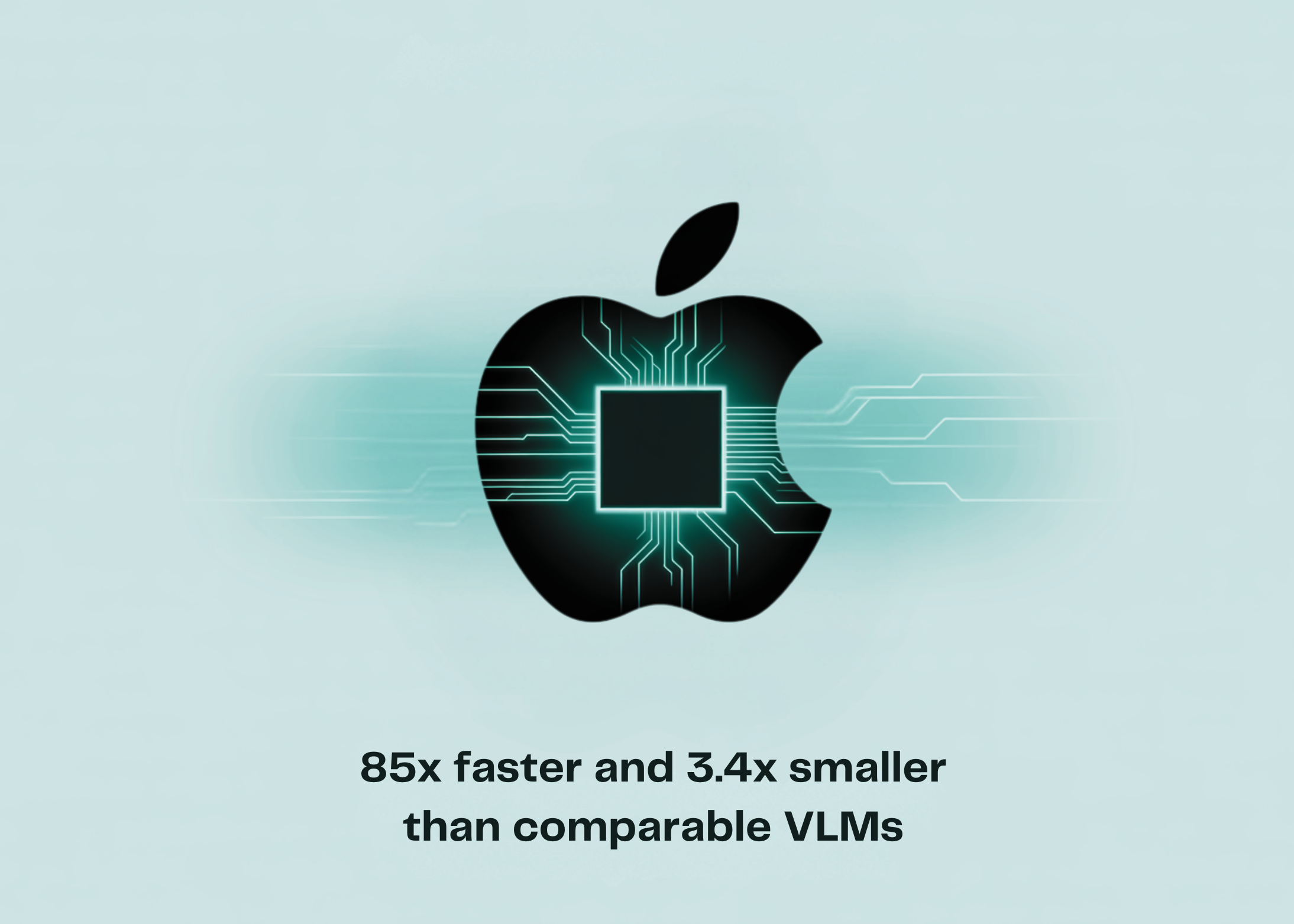Blog
Apple Released FastVLM: A Novel Hybrid Vision Encoder which is 85x Faster and 3.4x Smaller than Comparable Sized Vision Language Models (VLMs)

Apple Unveils FastVLM: A Revolutionary Hybrid Vision Encoder
In a significant technological leap, Apple has introduced FastVLM, a groundbreaking hybrid vision encoder designed to enhance the efficiency and speed of vision-language processing. This innovative model stands out in the crowded field of vision-language models (VLMs), claiming to be 85 times faster while occupying only 3.4 times less space than its counterparts of similar size. Let’s take a closer look at what makes FastVLM a game-changer in the realm of artificial intelligence.
Understanding Vision-Language Models
Vision-language models have become essential in various applications, from image recognition to natural language processing. They serve as a bridge between visual data and linguistic information, enabling machines to interpret and respond to complex visual stimuli in human-like ways. The primary function of VLMs is to understand the relationship between images and texts, opening avenues for applications like automated image captioning, visual question answering, and more.
The Need for Speed and Efficiency
As technology progresses, the demand for faster and more efficient models has surged. Traditional VLMs often consume significant computational resources, making them less practical for real-world applications. They require a lengthy training process and substantial hardware capabilities. FastVLM aims to tackle these challenges head-on, combining speed and efficiency without sacrificing performance.
Key Features of FastVLM
Unparalleled Speed
One of the standout features of FastVLM is its remarkable speed. The model’s architecture has been optimized to process information 85 times faster than similar models. This enhancement means that real-time applications can now run seamlessly, whether in mobile devices, augmented reality systems, or complex data analysis platforms.
Reduced Size
FastVLM manages to maintain high performance while being 3.4 times smaller than other comparable vision-language models. This reduction in size not only optimizes memory usage but also broadens the accessibility of powerful AI tools across various devices, including smartphones and IoT devices. Users can enjoy advanced features without the heavy resource requirements traditionally associated with such technology.
Innovative Architecture
FastVLM incorporates state-of-the-art architectural innovations that differentiate it from older models. The hybrid structure enables it to process both visual and textual data more effectively. By utilizing a combination of neural network techniques, FastVLM ensures that both data types are synthesized harmoniously, resulting in richer and more accurate interpretations.
Benefits for Developers and Industries
Enhanced User Experience
For developers, FastVLM offers a streamlined approach to integrating vision-language processing into applications. With its high speed and low resource consumption, developers will find it easier to create intuitive user experiences. Applications across sectors like social media, e-commerce, and digital marketing can benefit immensely from this advanced technology.
Broader Accessibility
The reduced model size means that even devices with limited computational power can leverage FastVLM’s capabilities. This feature democratizes access to advanced AI tools, enabling smaller businesses and startups to harness the power of hybrid vision processing without the prohibitive costs associated with heavyweight models.
Expanding Application Scope
The introduction of FastVLM expands the horizon of potential applications. Here are some areas where its impact is already becoming evident:
E-commerce Enhancement
In the e-commerce sector, FastVLM can revolutionize how users interact with products. Automated image recognition paired with natural language processing allows for instant feedback and personalized recommendations based on visual cues and user queries. This capability fosters a more engaging shopping experience.
Creative Industries
For content creators, FastVLM can aid in generating compelling narratives based on visual content. By understanding the relationship between images and text more accurately, tools powered by FastVLM can automate tasks like video captioning, storytelling, and enhancing user-generated content.
Educational Tools
In education, FastVLM can be utilized to develop intelligent tutoring systems. These systems can analyze images or videos and provide contextualized explanations, helping learners grasp complex concepts more effectively.
Future Prospects
As FastVLM paves the way for future advancements in hybrid vision processing, it’s essential to consider its long-term implications. The AI landscape is rapidly evolving, and with such robust tools now available, we may witness unprecedented innovations in machine learning, computer vision, and natural language understanding.
Continuous Development
Apple’s commitment to continual improvement suggests that FastVLM will likely undergo regular updates, enhancing its capabilities even further. As more developers adopt this model, collaborative advancements could push the boundaries of what AI can achieve, leading to smarter applications that can adapt to user needs swiftly.
Conclusion
Apple’s launch of FastVLM marks a significant milestone in the artificial intelligence landscape. With its impressive speed, compact size, and innovative architecture, this hybrid vision encoder not only simplifies the integration of vision-language processing but also broadens its potential applications across various industries. As it continues to evolve, FastVLM is well-positioned to become an essential tool for developers and businesses alike, shaping the future of AI and its practical implementations.
By embracing such transformative technology, we can look forward to a future where machines better understand the world—one that resonates more closely with human comprehension and interaction.

